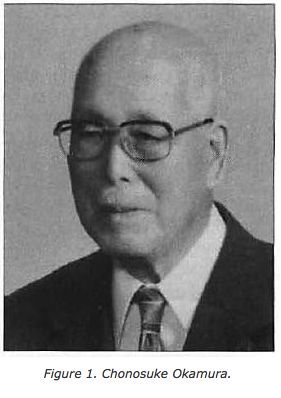 by Earle E. Spamer
by Earle E. SpamerIn the 1970s and 1980s, Chonosuke Okamura of Nagoya, Japan, took time to look at things in a different light. Sadly, he has disappeared from the scholarly publishing scene, perhaps the last of the eccentrically productive naturalists. Not wasting his energies on the formalities of peer review, he took the fast track of communication. He delivered his findings directly to numerous paleontological professional meetings in Japan (one wonders if he was treated politely as an odd uncle, or giddily as a paleontological P.D.Q. Bach). He published more extensive descriptions and analyses in the Original Reports of tile Okamura Fossil Laboratory.
The Great Discoverer
Okamura did no less than discover the Silurian Period beginnings of all vertebrate life, including humans, 425 million years ago. Nearly everything he found was a new subspecies, whether the species was extant or extinct. Some examples are Gorilla gorilla minilorientalis (gorilla), Canis familiaris minilorientalis (common dog), Homo sapiens minilorientalis (humans), Pterodactylus spectabilis minilorientalis (pterodactyl), and Brontosaurus excelus minilorientalis (a dinosaur).
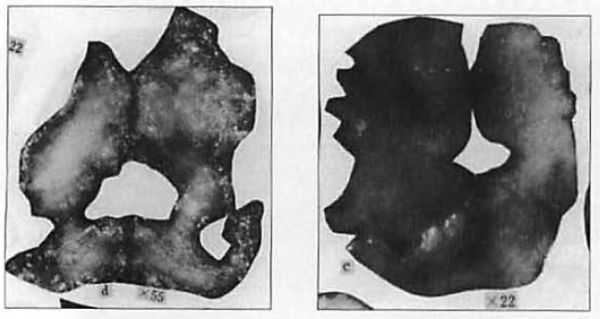
Figure
2 (left) “Fossil of kissing.” (Okamura. 1980. fig. 75.) Figure 3
(right) “Marble statue of the kiss by Nagaiwa miniman” (Okalllura. 1980.
fig. 76.)
(Did I mention, that they were all diminutive,
discovered through the eyepiece of Okamura’s microscope? In his
description of the mini-man, he wrote, "There have been no changes in
the bodies of mankind since the Silurian period ... except for a growth
in stature from 3.5 mm to 1,700 mm.")
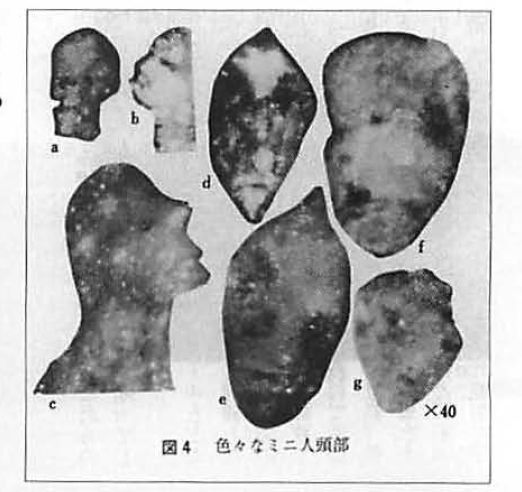
Figure 4 Faces of minimen. The bottom-center face appears to be a mini-bank robber, an aspect of miniman social structure apparently not discussed by Okamura. (Okamura. 1983. fig. 4.)
Big Thoughts from Little Things
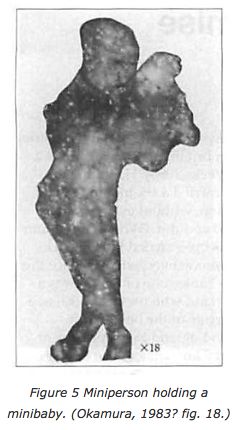 Using
slabs of polished limestone from Mount Nagaiwa in lwate Prefecture,
Okamura scrutinized the surfaces with a microscope. There he saw tiny
shapes, which most geologists have thought to be mineral grains and the
fossils of tiny foraminifera and coral fragments. But Okamura discerned
that the figures resemble millimeter-sized remains of many modem
animals, including human beings. He had discovered, in a world older
than Lilliput, the beginnings of vertebrate evolution. He unwittingly
revealed inherent flaws in both Darwmism and Creationist worldviews. He
found the beginnings of modem culture, too: his "protominimen" show
evidence of solid work ethics, art crafting, social nobility,
theological beliefs, and hairdressing.
Using
slabs of polished limestone from Mount Nagaiwa in lwate Prefecture,
Okamura scrutinized the surfaces with a microscope. There he saw tiny
shapes, which most geologists have thought to be mineral grains and the
fossils of tiny foraminifera and coral fragments. But Okamura discerned
that the figures resemble millimeter-sized remains of many modem
animals, including human beings. He had discovered, in a world older
than Lilliput, the beginnings of vertebrate evolution. He unwittingly
revealed inherent flaws in both Darwmism and Creationist worldviews. He
found the beginnings of modem culture, too: his "protominimen" show
evidence of solid work ethics, art crafting, social nobility,
theological beliefs, and hairdressing.
Okamura also saw dragons, horrific denizens of the mini-world of Mount Nagaiwa. He illustrated one disturbing example of the "Head of a miniman in the alimentary canal of a dragon." All of these things are meticulously documented in his profusely illustrated Japanese-and-English Period of the Far Eastern Minicreatures (1980),1 New Facts: Homo and All Verlebra Were Born Simultaneously in the Former Paleozoic in Japan (1983),2 and an illustrated book (1983?)3 entirely in Japanese. His life's work has been summarized in The Annals of Improbable Research (in vol. 1, no. 4 and in vol. 2, no. 4), and more widely acknowledged in book form in English, German and Italian (Abrahams, 1997, 1999). Chonosuke Okamura was awarded the Ig Nobel Prize for Biodiversity in 1997 (AIR 3:1).
 Using
slabs of polished limestone from Mount Nagaiwa in lwate Prefecture,
Okamura scrutinized the surfaces with a microscope. There he saw tiny
shapes, which most geologists have thought to be mineral grains and the
fossils of tiny foraminifera and coral fragments. But Okamura discerned
that the figures resemble millimeter-sized remains of many modem
animals, including human beings. He had discovered, in a world older
than Lilliput, the beginnings of vertebrate evolution. He unwittingly
revealed inherent flaws in both Darwmism and Creationist worldviews. He
found the beginnings of modem culture, too: his "protominimen" show
evidence of solid work ethics, art crafting, social nobility,
theological beliefs, and hairdressing.
Using
slabs of polished limestone from Mount Nagaiwa in lwate Prefecture,
Okamura scrutinized the surfaces with a microscope. There he saw tiny
shapes, which most geologists have thought to be mineral grains and the
fossils of tiny foraminifera and coral fragments. But Okamura discerned
that the figures resemble millimeter-sized remains of many modem
animals, including human beings. He had discovered, in a world older
than Lilliput, the beginnings of vertebrate evolution. He unwittingly
revealed inherent flaws in both Darwmism and Creationist worldviews. He
found the beginnings of modem culture, too: his "protominimen" show
evidence of solid work ethics, art crafting, social nobility,
theological beliefs, and hairdressing.Okamura also saw dragons, horrific denizens of the mini-world of Mount Nagaiwa. He illustrated one disturbing example of the "Head of a miniman in the alimentary canal of a dragon." All of these things are meticulously documented in his profusely illustrated Japanese-and-English Period of the Far Eastern Minicreatures (1980),1 New Facts: Homo and All Verlebra Were Born Simultaneously in the Former Paleozoic in Japan (1983),2 and an illustrated book (1983?)3 entirely in Japanese. His life's work has been summarized in The Annals of Improbable Research (in vol. 1, no. 4 and in vol. 2, no. 4), and more widely acknowledged in book form in English, German and Italian (Abrahams, 1997, 1999). Chonosuke Okamura was awarded the Ig Nobel Prize for Biodiversity in 1997 (AIR 3:1).
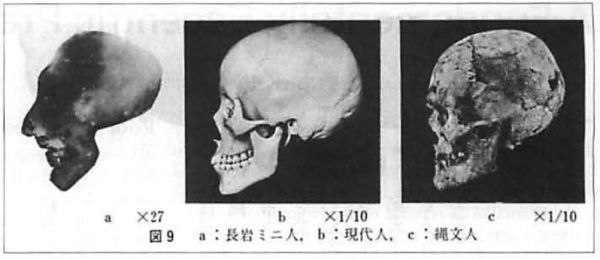

No comments:
Post a Comment